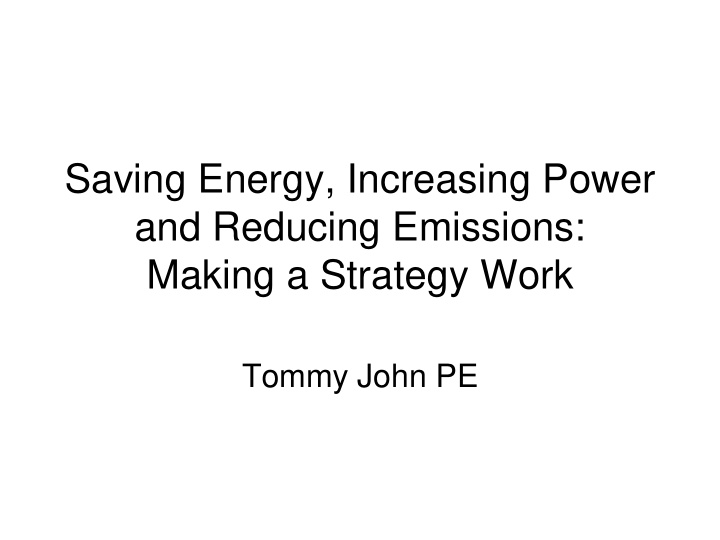



Saving Energy, Increasing Power and Reducing Emissions: Making a Strategy Work Tommy John PE
Tommy John PE • BSME Texas Tech and MChE Univ. of Houston • Consulting Engineer with a 40 year career in the process and power industries • Atlantic Richfield, Tenneco, Waste Management, and Texas Petrochemicals • Served Gulf Coast Cogeneration Association (President) Texas Combined Heat and Power Initiative (Director), Gulf Coast Energy Conservation Society (President), and South Texas Section of AIChE (Chairman) • tjohn@indian-creek.net
7 REACTOR CATOFIN UNIT
7 REACTOR CATOFIN UNIT
Deltak HRSG
INLET TRANSITION 54 in Header
Plexiglass Model For Modeling Turbulent Flow
Vertical Duct Burner Elements
Steam System with old HRSG Power HRSG Boilers 750# Header 130 kpph 450 # Header Turbine Generaor Mech 1400 kw Drive 150 # Header
Increase Power Output by Locating New HRSG on 750 Header Power HRSG New Boilers HRSG 750# Header +130 kpph 0 kpph 450 # Header Turbine Generaor +5250 kw Mech 0 kw Drive 150 # Header
BENEFITS • Energy Saving 1 Trillion Btu/yr • Carbon Dioxide Reduction 58,000 tons/yr • VOC Reduction 230 tons/yr • Carbon Monoxide Reduction 300 tons/yr • NOx Offset 130 tons/yr • Increase Turbine Generator Power 3850 kw • American Chemical Council Energy Award • Reliable- No Forced Outages in 6 Years
CONCLUSIONS • Waste Heat Recovery Saves Energy and Reduces Emissions • Integrating Power and Thermal Use Maximizes Energy Savings • Waste Heat Recovery Often Requires More Engineering and Innovation
Recommend
More recommend